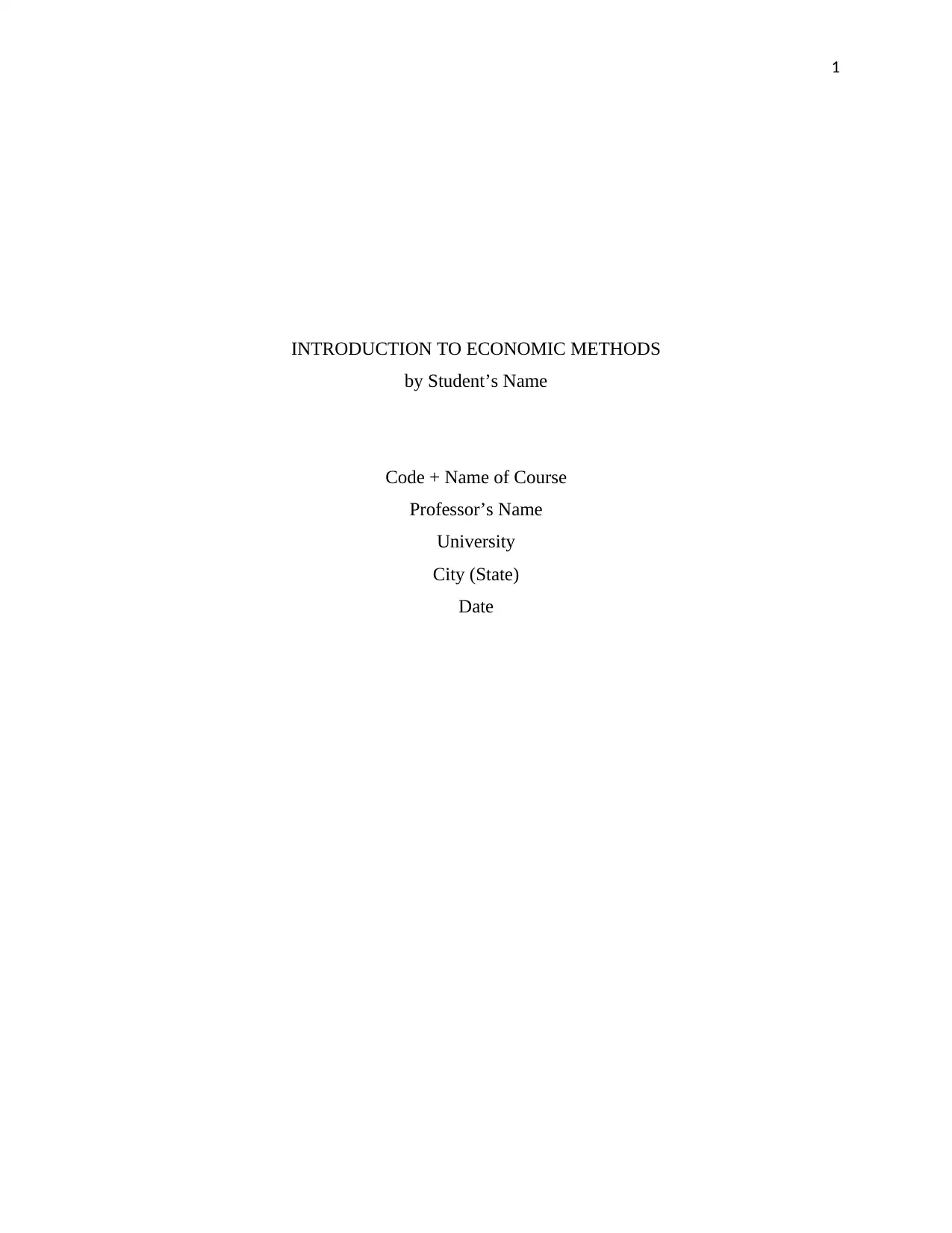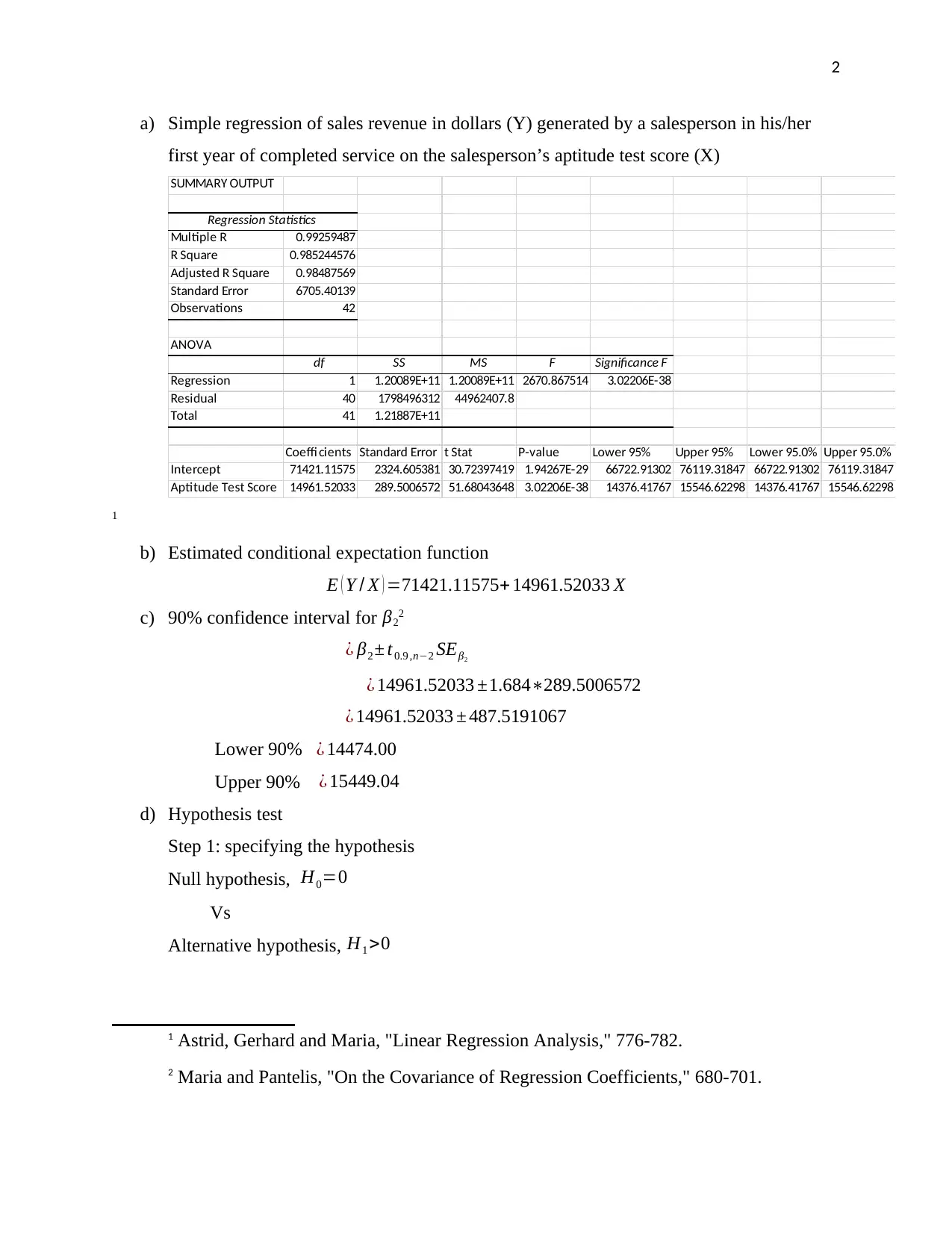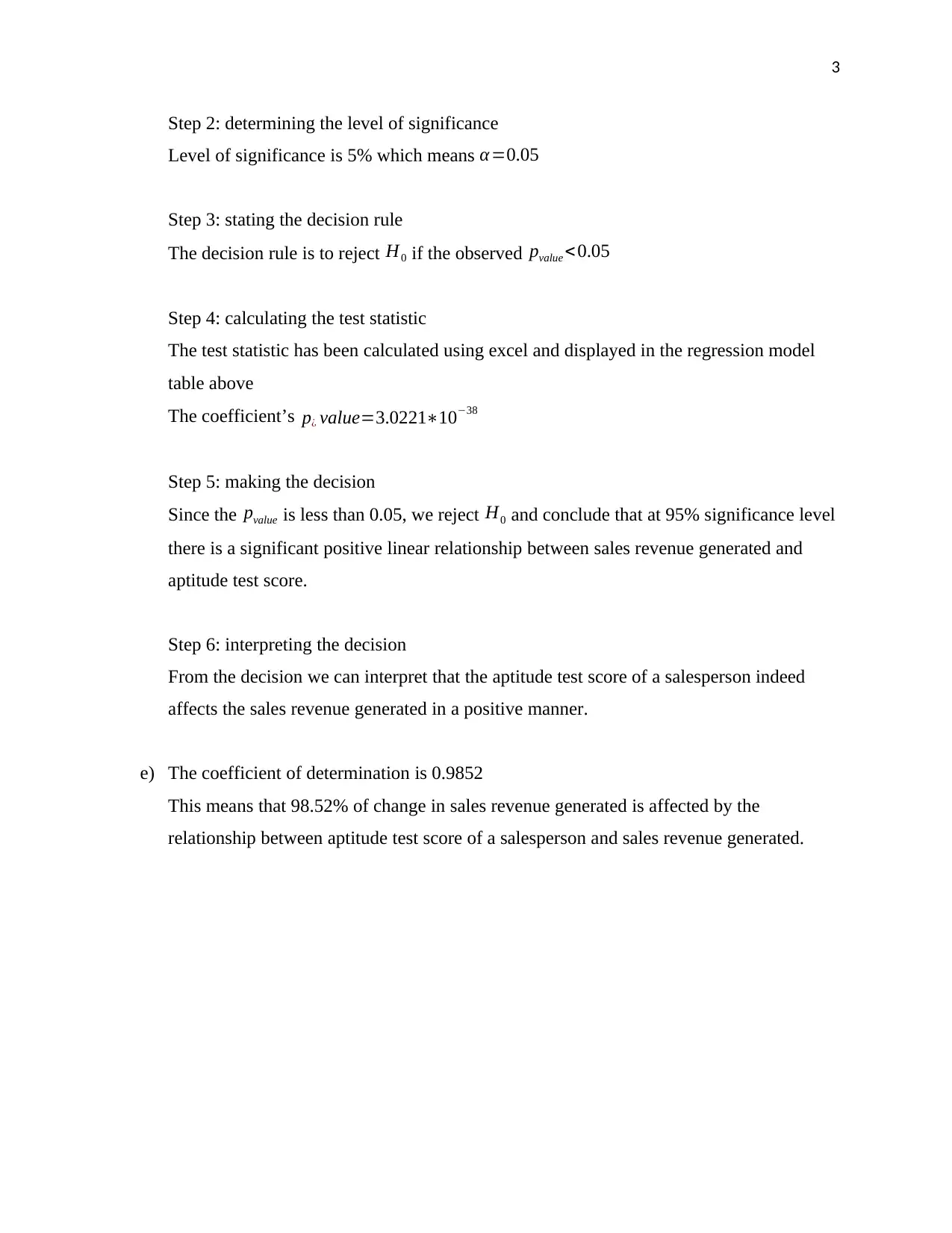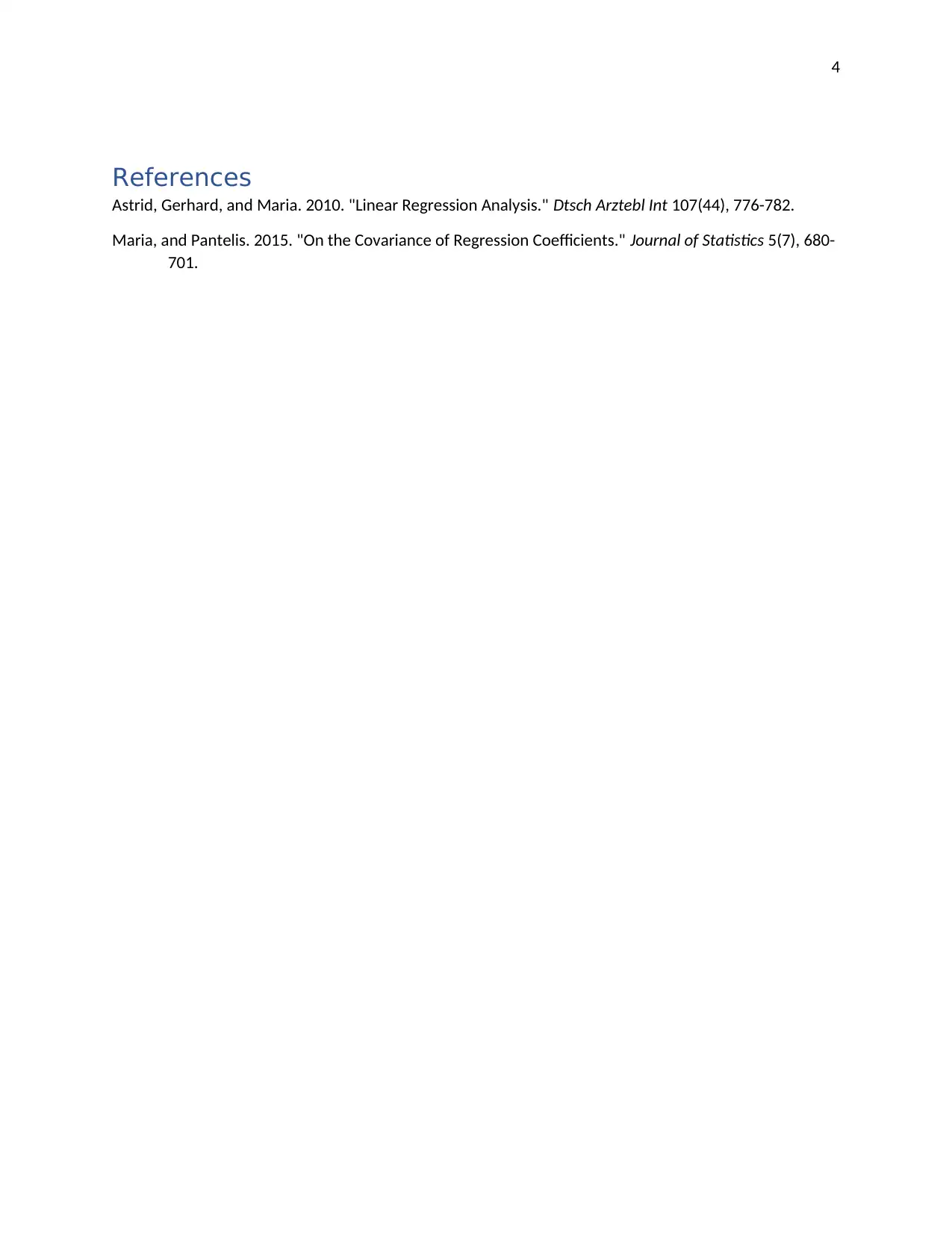200052 Introduction to Economic Methods Computing Assignment
VerifiedAdded on 2023/03/31
|4
|398
|136
Homework Assignment
AI Summary
This assignment solution focuses on applying linear regression to analyze the relationship between a salesperson's aptitude test score and their generated sales revenue. The solution begins with an introduction and presents a regression analysis using Excel, providing a summary output with key statistics such as R-squared, coefficients, and standard errors. The estimated conditional expectation function is derived, and a 90% confidence interval for the regression coefficient is calculated. A detailed hypothesis test is conducted, including null and alternative hypotheses, significance level, decision rule, test statistic calculation, and interpretation. The coefficient of determination is also interpreted. The assignment uses a dataset of 42 salespeople to demonstrate the positive linear relationship between aptitude test scores and sales revenue, concluding that higher aptitude scores correlate with increased sales performance. References to relevant academic sources are included.
1 out of 4





![[object Object]](/_next/static/media/star-bottom.7253800d.svg)